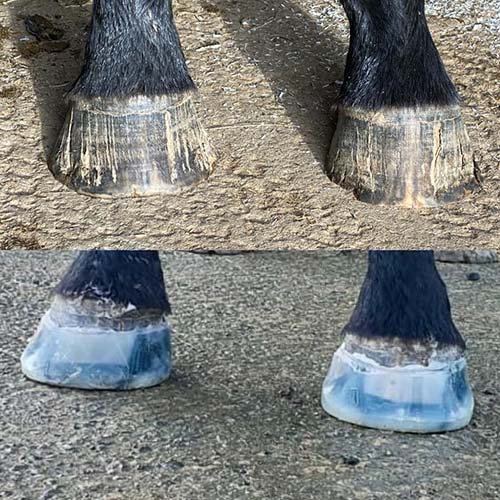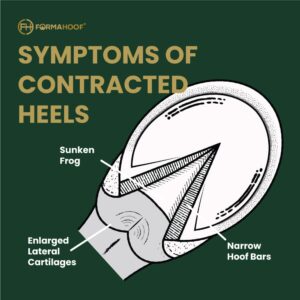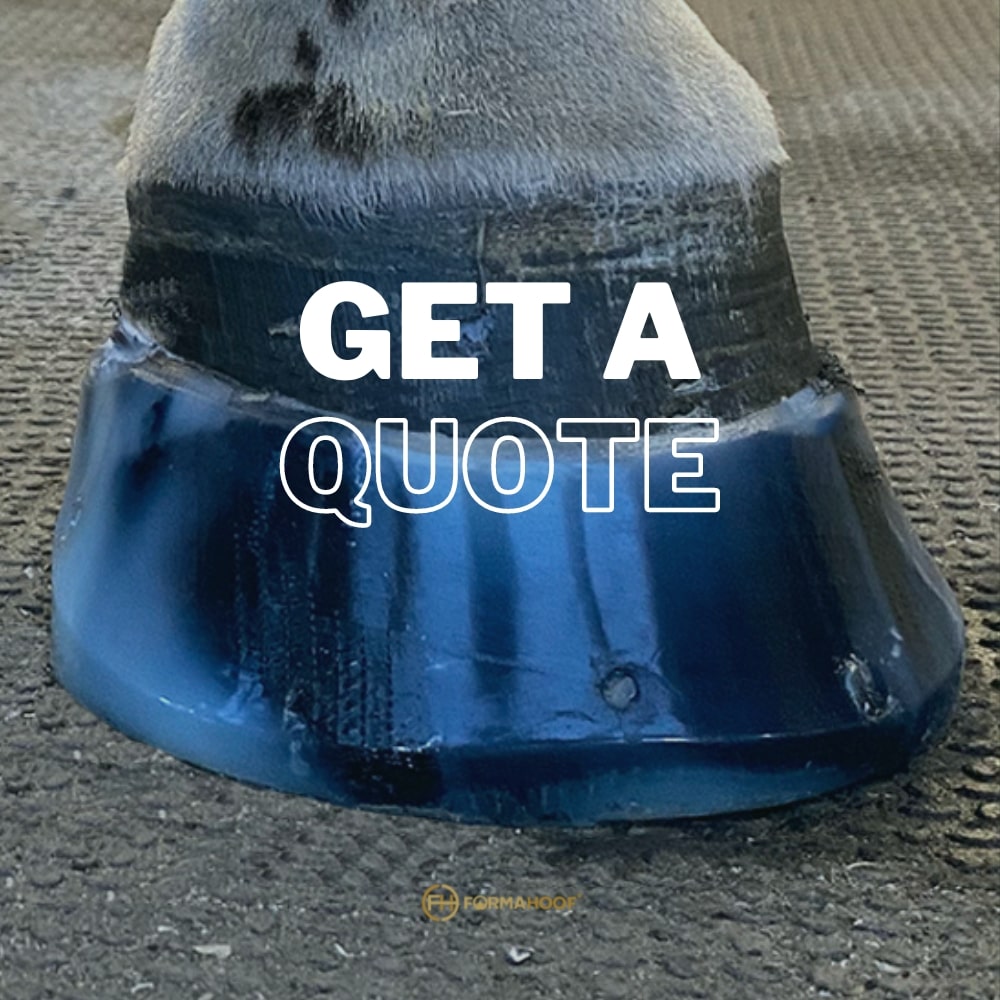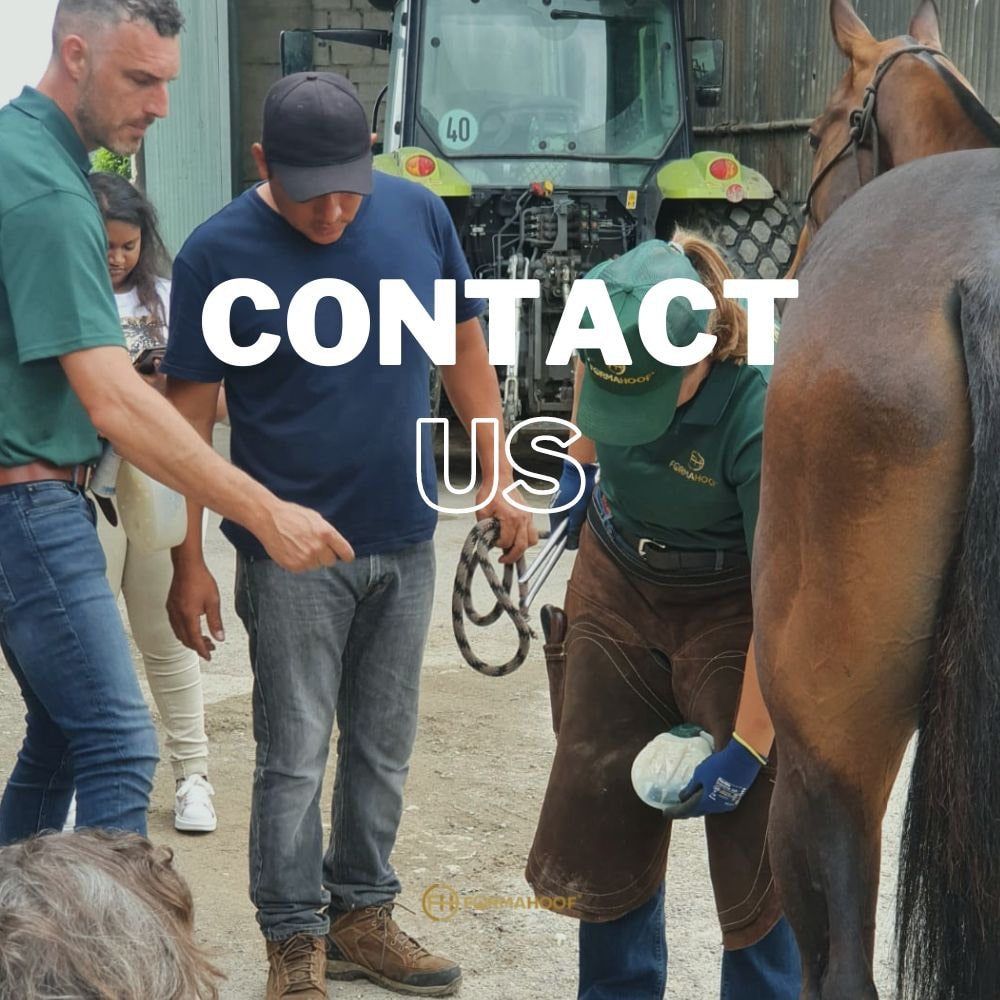Horse hoof cracks, irregularities, and chips can be harmless, but it is important to examine the hoof wall regularly for defects, to avoid bigger problems.
Hoof cracks can appear at various sites and to varying depths in the horn of the hoof capsule and are often the result of poor hoof quality, imbalances or occasionally trauma.
Identifying the cause of the cracks is fundamental to its treatment and it’s important to be aware that hoof crack treatment may be complicated if it involves the sensitive laminae.
If your horse is lame or suffers from coronary band damage, always ask your local equine veterinarian or farrier to examine the horse, as a variety of problems can cause lameness and a precise diagnosis has to be made as early as possible for your horse to receive the correct treatment.
What Causes Horses’ Hooves To Crack?

Hoof cracks are a very common hoof problem in horses and can occur in a variety of ways. The most common cause is a change in ground conditions, usually from very wet, muddy conditions to a dry environment.
Horse hooves can also crack under pressure from some sort of trauma and the forces that cause the crack sometimes originate within the hoof itself. Hoof balance problems from poor or neglected farriery work or conformation issues place extra pressure on the hoof.
Poor equine nutrition can also lead to hoof cracks, as well as reducing the hoof’s ability to grow. Biotin and other essential nutrients should be given in sufficient amounts to support the needs of your individual horse.
If your horse isn’t receiving the right levels of these nutrients, their ability to grow new hoof is limited. It can also cause nutrient deficiencies which will compromise hoof health and integrity and leave the hooves more prone to infection and disease.
The best way to figure out the cause of a hoof crack is first to identify what type of hoof crack it is. Cracks vary in severity and if you are concerned you should contact your local hoof care professional or vet immediately.
Sometimes a crack may be caused by an external trauma: a serious blow to the hoof can cause injury or, if severe enough, may crack the hoof. Cracks can also be the result of repetitive behaviour such as kicking at hard ground or walls or galloping regularly on rough terrain.
Genetics also plays a role in the strength and thickness of a horse’s hoof walls – as much as horses are selected by breeders for performance, appearance, or other attributes. They can also inherit hoof quality and predisposition to hoof diseases, such as Hoof Wall Separation Disease (HWSD) which is an inherited disease in some Connemara ponies.

How Do You Stop Horse’s Hooves From Splitting?
As a horse owner it is crucial to ensure your horse’s hooves are well cared for with a good hoof care routine:
- Pick out your horses’ hooves daily with a hoof pick.
- Moisturise the hoof every other day during the summer to help prevent splitting or cracking.
- Check shoes for wear and tear and signs that it’s time for a farrier visit – such as a loose shoe, risen clinches, or overgrown and misshapen feet.
- Check barefoot horses for splits, cracks, flares, and overgrown, misshapen hooves.
- Ensure that your local farrier attends shod feet every four to six weeks, and barefoot hooves every four to ten weeks.
How Can I Strengthen My Horse’s Hooves?
There are a variety of things you can do daily to contribute to the overall strength of your horse’s hooves. It all starts with your daily hoof care routine and ensuring that you are providing the right nutrition for healthy hooves.
If you find that your horse’s hooves still crack and split, despite doing your best to care for them, it may be down to some of the most common hoof problems.
Can Hoof Oil Fix Hoof Cracks Or Does it Cause Brittle Feet?
There is an ongoing discussion whether hoof oil can fix dry and brittle hooves or whether it makes them worse. We asked Belgian farrier and FormaHoof Expert – Bart Lambert – to offer his advice on moisture management for equine feet:
“I advise regular moisturising of the feet through dry season, which you can do with water. Many people believe that hoof oil is the best option. However, just imagine yourself fully covered with oil before going into the shower – the water would just run off you and not enter the body.
The principal is just the same with your horse’s hooves. So, I recommend that people first wet their horse’s hooves and then treat them with hoof oil, balsam or another hoof care product, which then keeps the moisture in. A healthy, supple hoof is your horse’s first line of defense against hard ground.”
How Often Should Horses’ Hooves Be Trimmed?
In general horses need their feet trimmed every four to eight weeks, although the exact time for a cycle will vary for each horse and depend on various factors such as season, terrain, weather, and workload. While some horses may be comfortable with an 8 week trim, others may require a 4 week trim. Some barefoot horses may require even shorter cycles.
A trimming cycle should be determined with your hoof care professional and if you notice any unusual changes, injuries, cracks in your horse’s hooves or loose shoes, you should get in contact with your hoof care provider as soon as possible.
What Are the Different Types of Hoof Cracks A Horse Can Develop?
Hoof cracks go by various names—sand cracks, weather cracks, grass cracks, etc.—but the most basic way to describe these defects is according to their location, direction, and depth. These indicators also offer clues to the origin and severity of the problem.
Grass Crack
A crack originating at the distal border, either complete or partial, that runs parallel to the horn tubules toward the coronary band is known as a grass crack. Grass cracks can occur for several reasons, including poor ground conditions, poor nutrition, or a lack of exercise. They are considered as a split in the hoof wall.
Grass cracks can be caused by poor hoof quality, over-growth, the environment your horse is kept in, or white line disease / seedy toe. Some hooves are more prone to splitting. or they have been weakened by extremely wet or dry conditions. Over-growth can result in the hoof wall no longer being supported by the laminal bond at the white line and consequently any increased leverage can split the distal wall open.
Sand Crack
A sand crack is like a grass crack except it originates from the coronary band and continues distally, again running parallel to the horn tubules, complete or partial, but towards the distal border. They are considered a fracture of the hoof wall.
Sand Cracks can appear because of uneven stress in the hoof capsule caused by foot/ limb imbalance. In addition to the contributing factors listed under grass cracks, shoe type, fit and the work surface and speed of exercise can all be contributing factors.
Toe Sand Crack
Toe sand cracks are most often observed when there has been persistent anterior-posterior hoof/limb imbalance e.g. in chronic laminitis cases when a permanent misalignment of the hoof capsule and bone column can occur.
Quarter cracks

Quarter cracks are a common type of hoof capsule defect. They often cause lameness and/or decreased athletic performance for race and sport horses.
They typically originate at the coronary band in the quarter of the hoof and progress distally. Overreaching can cause both quarter and heel cracks and these cracks can be the most difficult to manage.
Quarter cracks tend to be painful for the horse and can cause lameness. A heel crack is typically caused by the uneven landing of the foot while exercising.
This can happen when there are conformational defects, including a carpus valgus (the outward deviation of the lower limb, starting from the knee) or various (an inward deviation of the lower limb that starts from the knee and presents itself as toeing in).
A quarter crack can also be the result of a variety of other factors, such as neglect, imbalance, coffin bone defects, fractures, keratomas, or constant impact on hard surfaces.
How To Treat Horse Hoof Cracks
Ground surface cracks that are not associated with lameness should be stabilized by hoof wall trimming and supported if necessary. If the crack is deep, it is important to keep it clean and medicate the cleaned area to avoid any infections. Extensive stabilization can be achieved with the encapsulation and 3D support offered by FormaHoof.

Where the coronary band is damaged, the crack should be cut out along its length, to minimize pinching of the laminae and to prevent perpetuation by overlapping edges. It should then be stabilized using a variety of methods, depending upon the nature of the crack and the experience and preference of your farrier, vet, or hoof trimmer.
Horse Hoof Cracks & Sport
Horse hoof cracks can range from minor to severe. However, for those horses that perform in equine-related sports, such as racing or polo, hoof cracks can be a serious problem.
For example, even if a crack is minimal, for horses exposed to the high-speed performance of a racetrack or that endures excessive pressure on their feet for long periods of time, that minor crack can quickly turn into something more severe. When a hoof crack becomes severe, not only can it be painful and impact a horse’s performance, but it can also lead to an infection that could potentially be deadly.
With that in mind, no matter how minor a hoof crack may appear to be, it is important to provide the proper care and treatment for the crack.
TB horses such as racehorses and many polo ponies tend to have sensitive and often ‘high-maintenance’ feet. We spoke to racehorse farrier and FCA Sven Targett about managing TB feet and his tips and tricks to keep equine athletes a stride ahead when it comes to healthy hooves.

“As Farriers, we are taught how to support and protect the overall function of the foot, but we have found it increasingly difficult to re-boot the caudal aspect of the foot. This often ends in expensive therapeutic shoeing packages for the rest of the working life of the horse.
FormaHoof gives us the option to help horses to recover the function of their feet. The three-dimensional fit of the FormaHoof Hoof Care system allows us to offload the loading structures of the feet, giving us the best ability to realign the bony column and effect better blood supply to the foot. This gives the horse’s body the best chance to re-grow the heel structure and suspension system for the foot.”
Read More
Regardless of breed and discipline, hoof cracks can affect every equine and should be treated as soon as they appear, to avoid more damage to the hoof and increased pain for the horse.
Hoof Crack Repair & Rehab with FormaHoof

Recovering from long-standing and complicated hoof cracks can be a long procedure. Traditional shoeing packages to repair or fix hoof cracks may include drilling holes, wiring, or other methods to prevent the crack from developing further.
However, these techniques may also cause more damage to the hoof wall, which can allow the hoof to become susceptible to infections.
FormaHoof Advanced Polymer is non-invasive and allows the hoof to naturally flex while supporting the cracked area, enhancing hoof growth, and shortening recovery times. FormaHoof Applications allow the horse to spread weight over the entire hoof capsule, which will take pressure off the crack and allow for better healing. With the full encapsulation of the hoof, infections can be avoided, and medication can be held in place where needed.

FormaHoof will not only support your horse on the road to recovery from hoof cracks, but also be a preventive shoeing package to avoid further hoof crack development.
The application allows the hoof to be in a consistent and moisture-controlled environment, whilst also keeping the hoof capsule protected and safe from external impacts.














4 Responses
Please contact me for healing my horse
Hi Susan! Thanks for your interest in FormaHoof, I’ve forwarded your details to customercare@formahoof.com so keep an eye out for an email from the team. Looking forward to seeing the results!
My mare has a hoof crack or split from front of hoof up about an half inch the farriers will be here Friday to hopefully fix the issue. My horses are bare footed and I think I need to put shoes on the mare with the split hoof. I’m new to raising horses and learn by reading and talking to people. I have a picture of her hoof. I clean their hooves everyday and put trush med on them. She runs in pasture and acts like it don’t bother her and when it’s feed time she uses that hoof to demand food fast which I think by digging hoof on ground made it split.
FormaHoof is designed to support natural hoof healing while offering protection and durability. It’s perfect for horse owners like yourself who are committed to providing the best care but may be new to the complexities of hoof health. By stabilizing the crack and encouraging natural hoof growth, FormaHoof can help your mare’s hoof repair itself over time. If shoes become necessary, nails can be applied directly to the FormaHoof application, reducing the need for invasive measures on the actual hoof. This makes it an excellent option for managing hoof issues while maintaining flexibility in treatment.